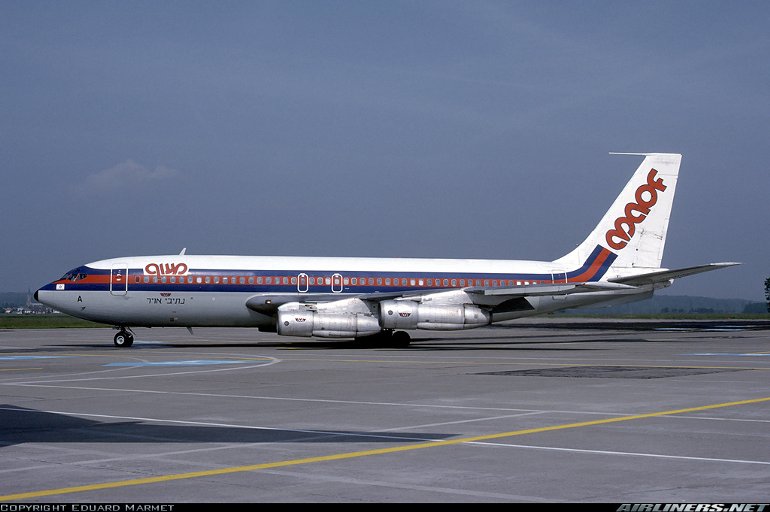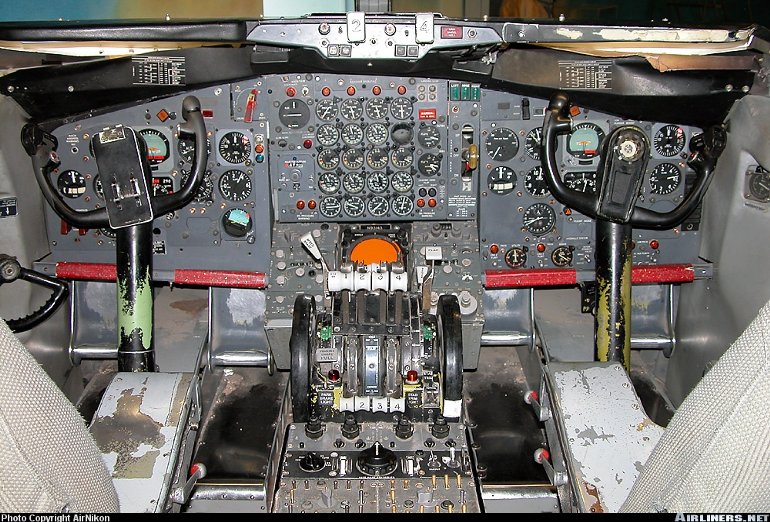Aircraft Technical Data
Boeing 720


| Details | |
| Country of Origin | United States of America |
| Type | Medium range narrowbody airliner |
| History | The 720 is a smaller capacity, lighter, medium range variant of the 707, given its own model number to indicate significant engineering changes. Introduced in 1959, the 720 (originally designated 707-020) retained the same basic structure as the 707-120, but was 2.54m (8ft 4in) shorter, which reduced seating to 112 (38 + 74) in a typical two class arrangement. Other changes were made to the wing which introduced full span leading edge flaps, while a glove between the inner engines and the fuselage increased wing sweep and wing area and decreased the wing's thickness/chord ratio. The changes to the wing made it more aerodynamically efficient, permitting higher cruising speeds and lowered minimum speeds (which aided field performance). Like the early 707s the first 720s had JT3C turbojets, although less powerful models lacking water injection because of the 720's lighter weight. Compared with the 707-120 the 720 also had reduced fuel capacity and a lower max takeoff weight. But many components were interchangeable between the 720 and 707, while inside the cabin the 720 and 707 shared the same passenger interior and flightdeck. The initial 720 (bound for launch customer United) first flew on November 23 1959. Certification was awarded on June 30 1960, and entry into service with United Airlines was on July 5 that year. The availability of the far more fuel efficient Pratt & Whitney JT3D turbofan resulted in the 720B, which was powered by either JT3D1s or 3s. First flight of the 720B was on October 6 1960, with certification awarded on March 3 1961. The 720B also featured a higher maximum zero fuel weight (significantly boosting payload/range) and an increased max takeoff weight due to the heavier turbofan engines. Major 720 operators included American Airlines (a number of its 720s were converted to 720Bs with turbofan engines), United, Continental, Eastern, Northwest Orient and Western, while operators outside the US included Lufthansa and Avianca. Today (early 2002) three 720s are believed to be in use as corporate transports, and two are used by Pratt & Whitney as engine testbeds. |
| Powerplants | 720B - Four 75.6kN (17,000lb) Pratt & Whitney JT3D1 turbofans or four 80kN (18,000lb) JT3D3s. |
| Performance | 720B - Max speed 1009km/h (545kt), max cruising speed 983km/h (530kt), economical cruising speed 896km/h (484kt). Range with maximum payload and no reserves 6687km (3610nm), range with max fuel 8428km (4550nm). |
| Weights | 720B - Operating empty 51,203kg (112,883lb), max takeoff 106,140kg (234,000lb). |
| Dimensions | Wing span 39.88m (130ft 10in), length 41.68m (136ft 9in), height 12.66m (41ft 7in). Wing area 234.2m2 (2521sq ft). |
| Capacity | Flightcrew of three comprising two pilots and a flight engineer. Typical seating for 112 in two classes, max seating for 149, later approved (for Eastern Air Lines) for 165. |
| Production | Between 1959 and 1969 Boeing built 65 720s and 89 720Bs (many 720s were converted to 720Bs). One in commercial service in Africa, three others used as corporate transports. |
| Related Links | Boeing 720 |
The backbone of this section is from the The International Directory of Civil Aircraft by Gerard Frawley and used with permission. To get your own copy of the book click here. |
|








